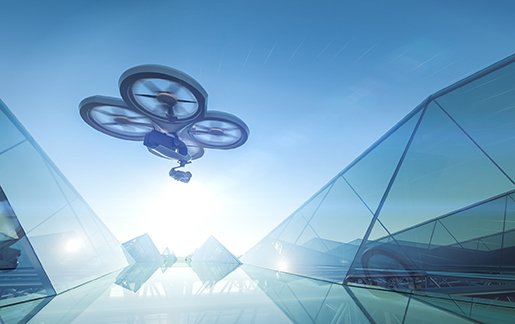K
Kathleen Martin
Guest
There are a lot of good reasons why uncrewed aerial vehicles (i.e., UAVs or drones) do not fly near, let alone contact, structures such as buildings, trees, or vehicles: it is very dangerous. In addition to environmental variables such as wind and barometric pressure creating difficult flight conditions, a host of technical issues, such as magnetic, electrical, and radio frequency interference, can also negatively impact drone flights.
For successful operations, UAV pilots need to recognize that a drone is a tool and, like any tool, is best suited for its intended use. No one should fly near, nor try to contact a surface or structure unless the drone has been designed for that type of use or specific use case. As business use cases and opportunities for drones and other UAVs increase, here are some things for drone service providers (both new and seasoned) to remember when it comes to flying safely.
Location, Direction, and Elevation Are Keys to Success
To fly a drone safely there are three primary indicators that any drone needs to know in real-time in flight: location, or where it is in the world; direction, or where it is headed; and altitude, or how far is it from the ground.
Solving For Compromised Flight Data
It’s possible to overcome some of these issues by building a Faraday cage or shield around some of the drone’s electronics. A Faraday cage is a grounded metal cover or screen surrounding a piece of equipment to exclude electrostatic and electromagnetic influences. This is particularly helpful, for example, for companies that complete close visual inspection of live powerlines on power transmission towers.
Another more complex solution involves designed and manufactured systems of a robotic arm/rod that protrudes from the drone body past the propellers, with a probe tip that makes physical contact with a surface, known in the robotics world as an end-effector. To enable the system to make physical contact with structures during flight they use a multimodal array of various sensors, an onboard computer, and a set of complex integrations, including a lot of software, to allow automated precision flight control close to structures. These systems flights make 20 or more micro adjustments to the flight per second, impossible for human pilots to replicate.
Continue reading: https://connect.comptia.org/blog/flying-safe-how-to-operate-drones-near-buildings-and-other-structures
For successful operations, UAV pilots need to recognize that a drone is a tool and, like any tool, is best suited for its intended use. No one should fly near, nor try to contact a surface or structure unless the drone has been designed for that type of use or specific use case. As business use cases and opportunities for drones and other UAVs increase, here are some things for drone service providers (both new and seasoned) to remember when it comes to flying safely.
Location, Direction, and Elevation Are Keys to Success
To fly a drone safely there are three primary indicators that any drone needs to know in real-time in flight: location, or where it is in the world; direction, or where it is headed; and altitude, or how far is it from the ground.
- Location. Typically, the drone uses the onboard Global Positioning Satellite (GPS) receiver to determine its exact spatial location. However, in many industrial locations or environments, such as above-ground storage tanks or large cargo ships, satellite signals may not be fully received and result in degraded or denied GPS coordinates.
- Direction. The magnetic compass onboard the drone is used to find north, which allows the drone to know its heading and directional orientation. However, in some environments, such as near large metal steel objects, compass readings can be inaccurate or unavailable.
- Elevation. Drones, like commercial aircraft, use barometric pressure to determine distance from the ground. However, when in close proximity to structures barometric readings are often skewed or incorrect.
Solving For Compromised Flight Data
It’s possible to overcome some of these issues by building a Faraday cage or shield around some of the drone’s electronics. A Faraday cage is a grounded metal cover or screen surrounding a piece of equipment to exclude electrostatic and electromagnetic influences. This is particularly helpful, for example, for companies that complete close visual inspection of live powerlines on power transmission towers.
Another more complex solution involves designed and manufactured systems of a robotic arm/rod that protrudes from the drone body past the propellers, with a probe tip that makes physical contact with a surface, known in the robotics world as an end-effector. To enable the system to make physical contact with structures during flight they use a multimodal array of various sensors, an onboard computer, and a set of complex integrations, including a lot of software, to allow automated precision flight control close to structures. These systems flights make 20 or more micro adjustments to the flight per second, impossible for human pilots to replicate.
Continue reading: https://connect.comptia.org/blog/flying-safe-how-to-operate-drones-near-buildings-and-other-structures

